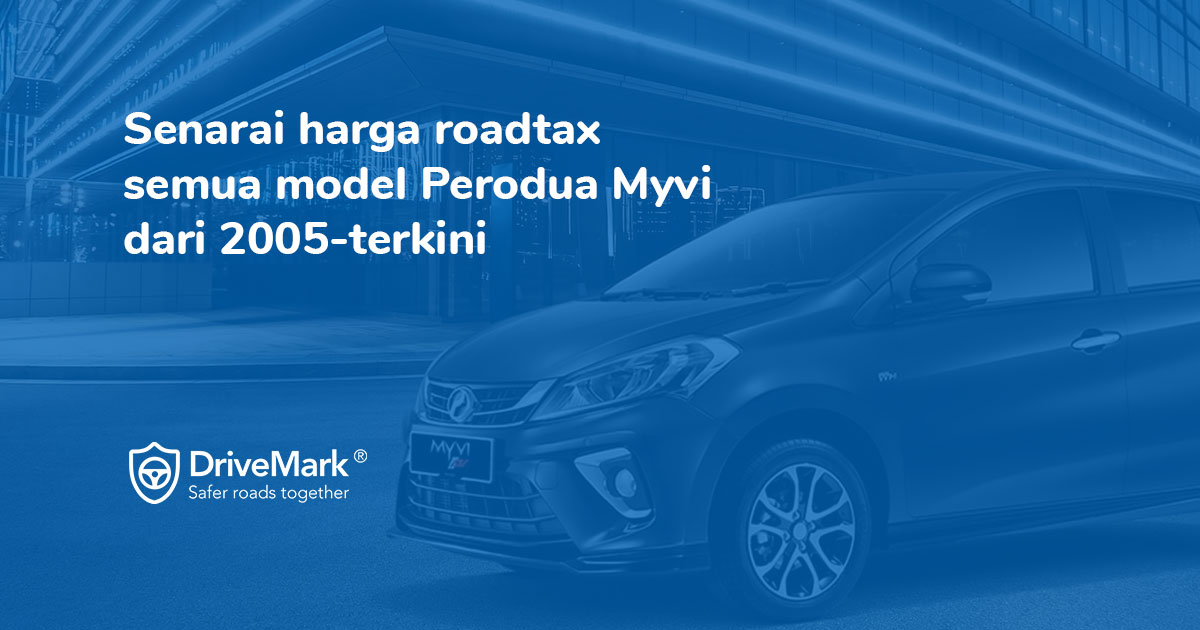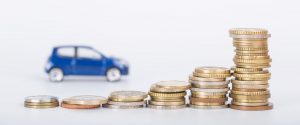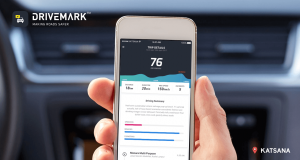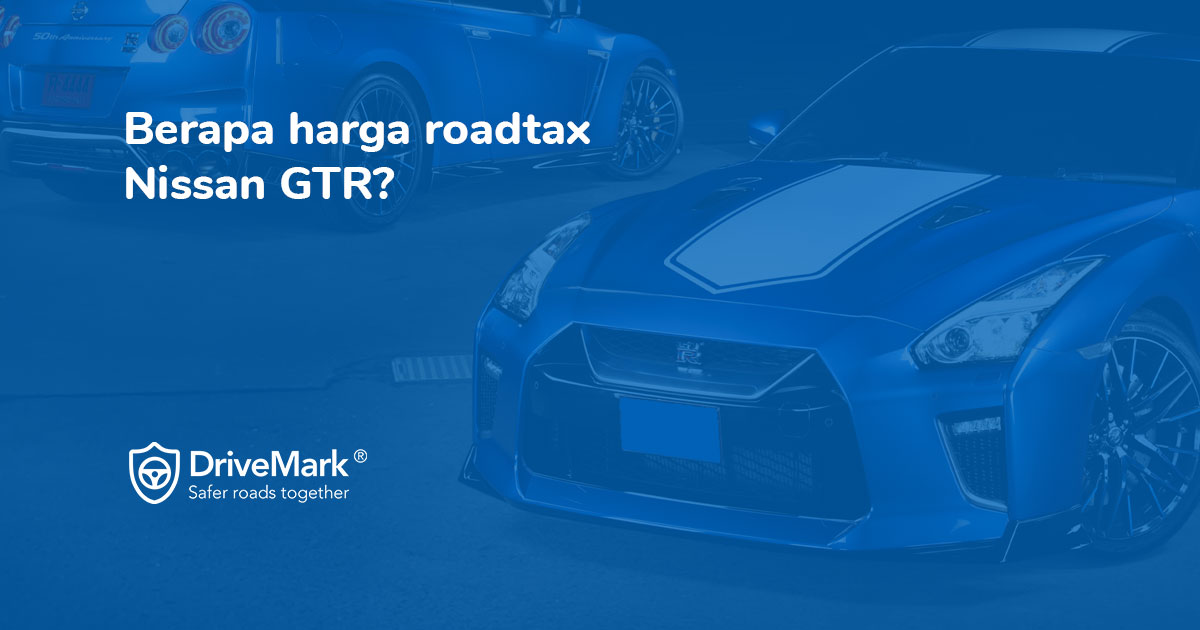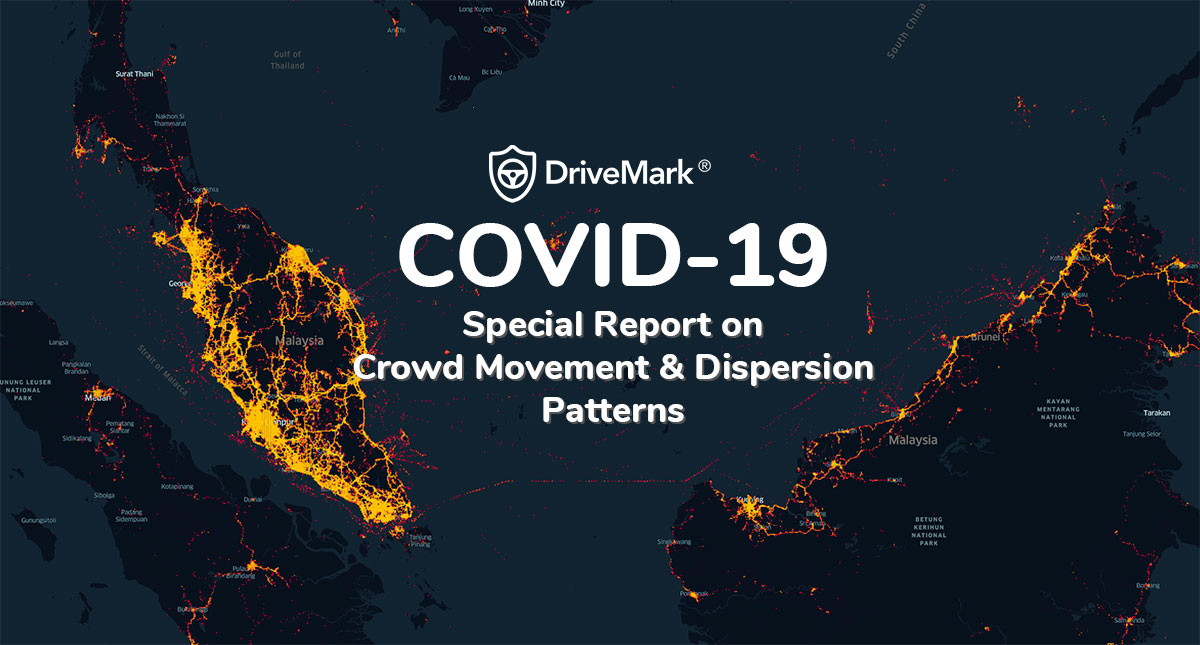
During this period of Restricted Movement Order, DriveMark has a unique opportunity to understand how well Malaysians comply to the #StayAtHome directive.
You see, DriveMark is app that collects driver behavior data. This data is used to score drivers based on how well they drive on the road. The app runs automatically in the background of the mobile phone, and will be active once a significant movement is detected.
That also means we have quite a good overview of crowd dispersion from one locality to another.
We are using the collected data from DriveMark to analyse how well our cohort of drivers comply on day-by-day basis, what is the typical distance of travel, what is the average number of travels per driver and locations with active movements.
Lets first start by daily movement patterns across Peninsular Malaysia on a typical, non-restricted day.
What is the typical scenario on a normal, non-COVID19 days?
DriveMark collects movement data all over ASEAN.
On a typical working day, lets say Monday, DriveMark collects around 55,000-60,000 trips daily in Malaysia.
Crowd movement on a typical, healthy day would resemble this pattern.
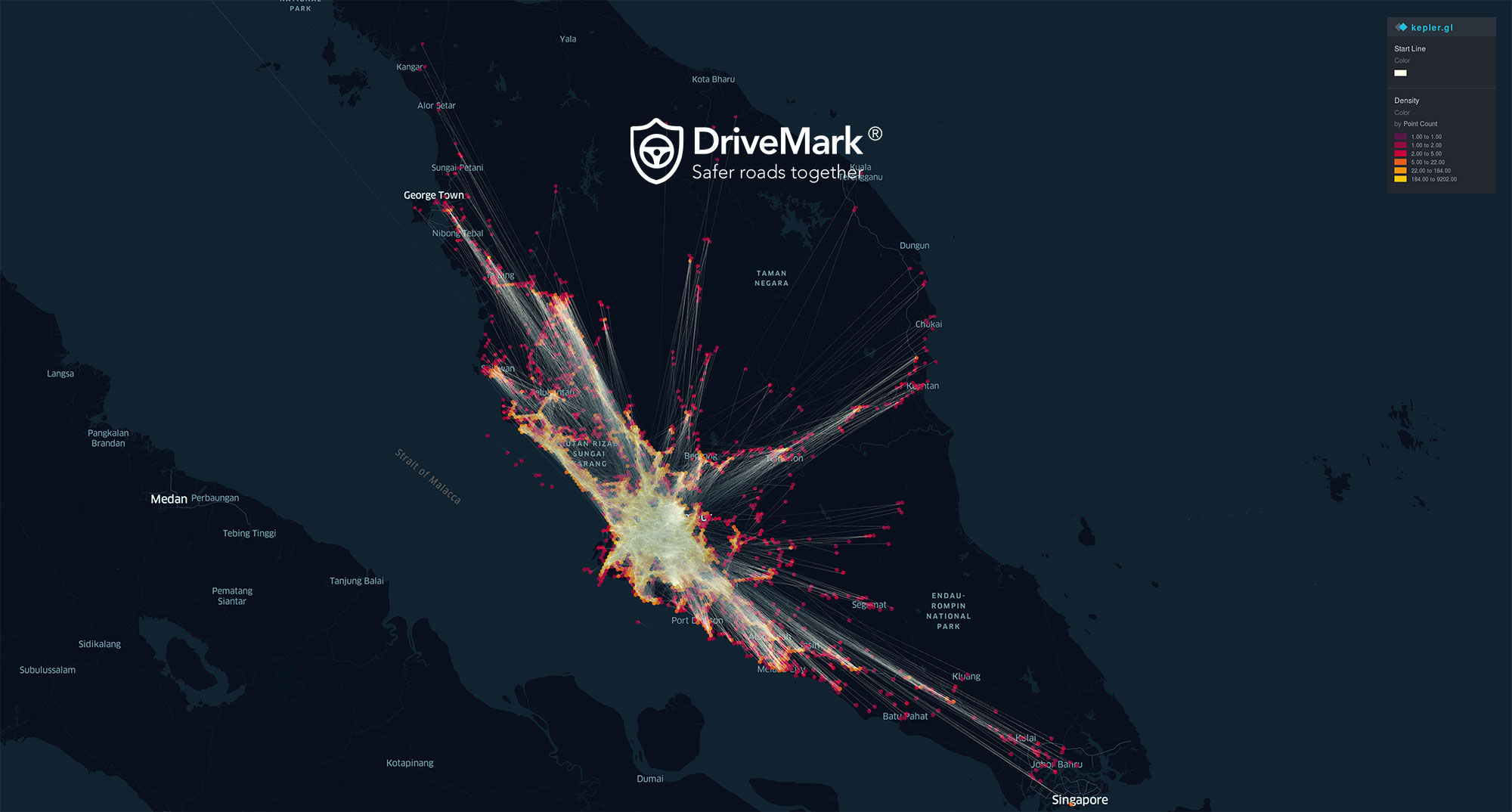
This image of Peninsular Malaysia visualizes any vehicular movement that starts in Selangor, and ends somewhere else. You will notice that people do travel from Selangor to each corners of the Peninsular, and this includes travel directly to our southern neighbor, Singapore.
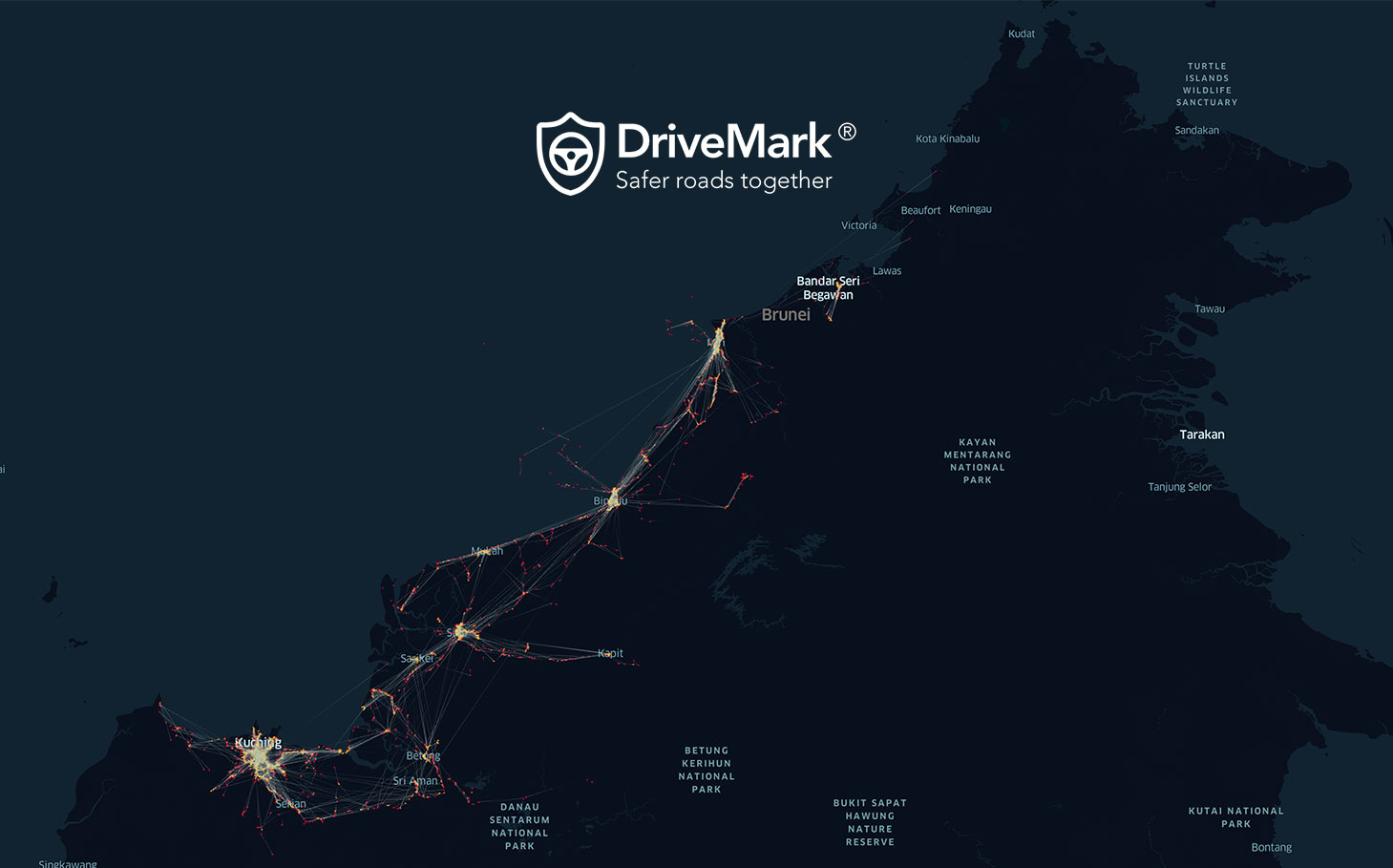
In comparison to Sarawak which encompasses an area of 124,450 km² (slightly smaller than Peninsular Malaysia at 132,090 km²), crowd movements in the state is mostly limited to within the state. People seldom drive from within the state into other states/countries given how enormous Sarawak really is. Most movements in Sarawak are between the four main cities which are Kuching, Sibu, Bintulu and Miri.
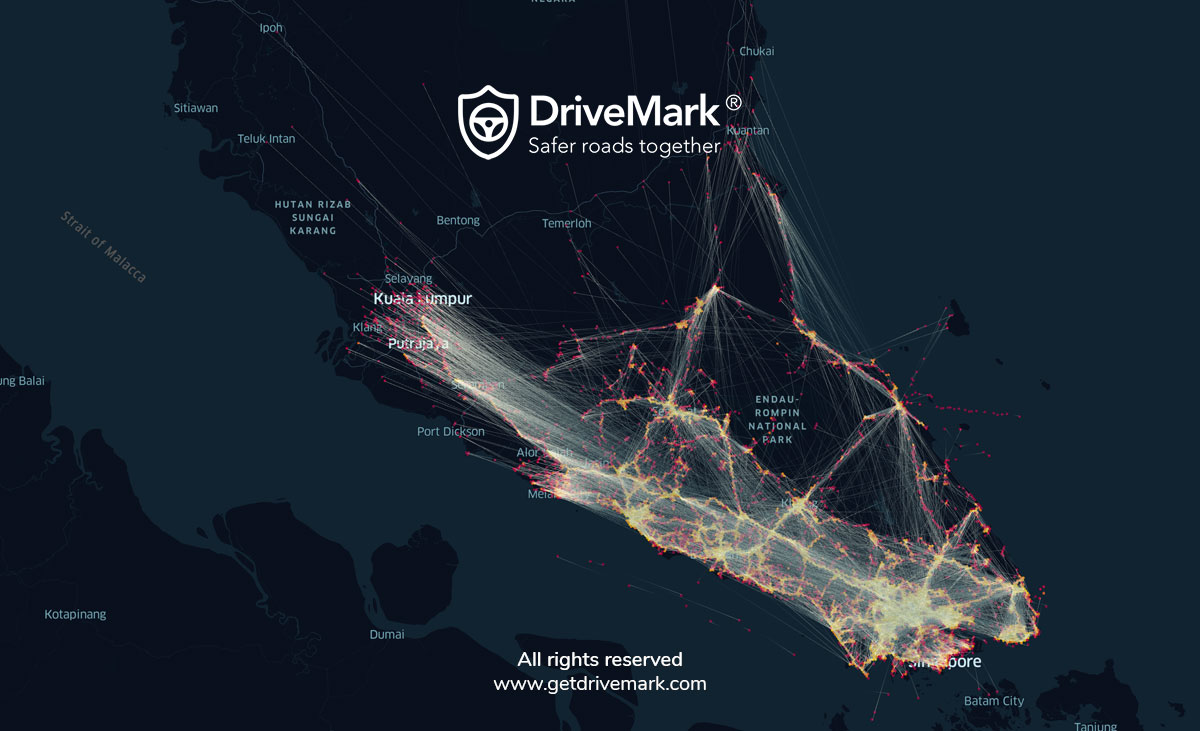
This would be typical daily movement of trips that start in Johor and Singapore, and end in other parts of Malaysia. You will see some users might originate in Singapore and drive as far north as Kuala Lumpur, Kuantan and Ipoh.
What is a non-typical, Covid19-impacted daily movement would look like?
16th March – Restricted Movement Order announced
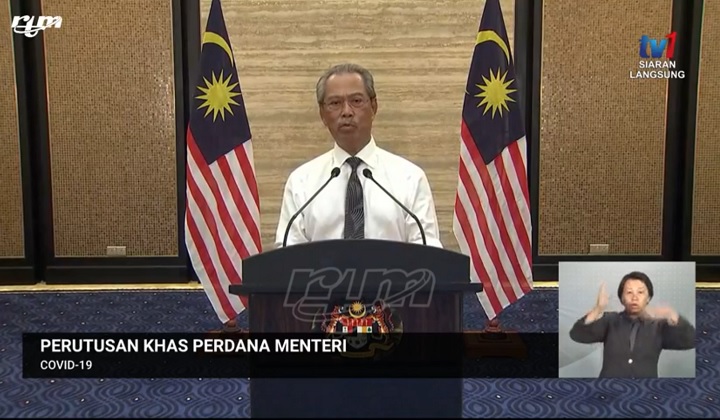
On the night of 16th March 2020, the 8th Prime Minister of Malaysia, Tan Sri Muhyiddin Yassin made the call to enter Malaysia into a limited lockdown period, called Restricted Movement Order (RMO).
Given increase of positive Covid19 cases days earlier, the directive was very much welcomed and expected by those who have been closely monitoring transmissions of Covid19.
However, general populace has been caught by surprise. Given there’s minimal information given out by the government in subsequent hours of announcement, chaos ensued as people hurried to shop and return to their hometowns.
17th March – The day before Restricted Movement Order is Effective
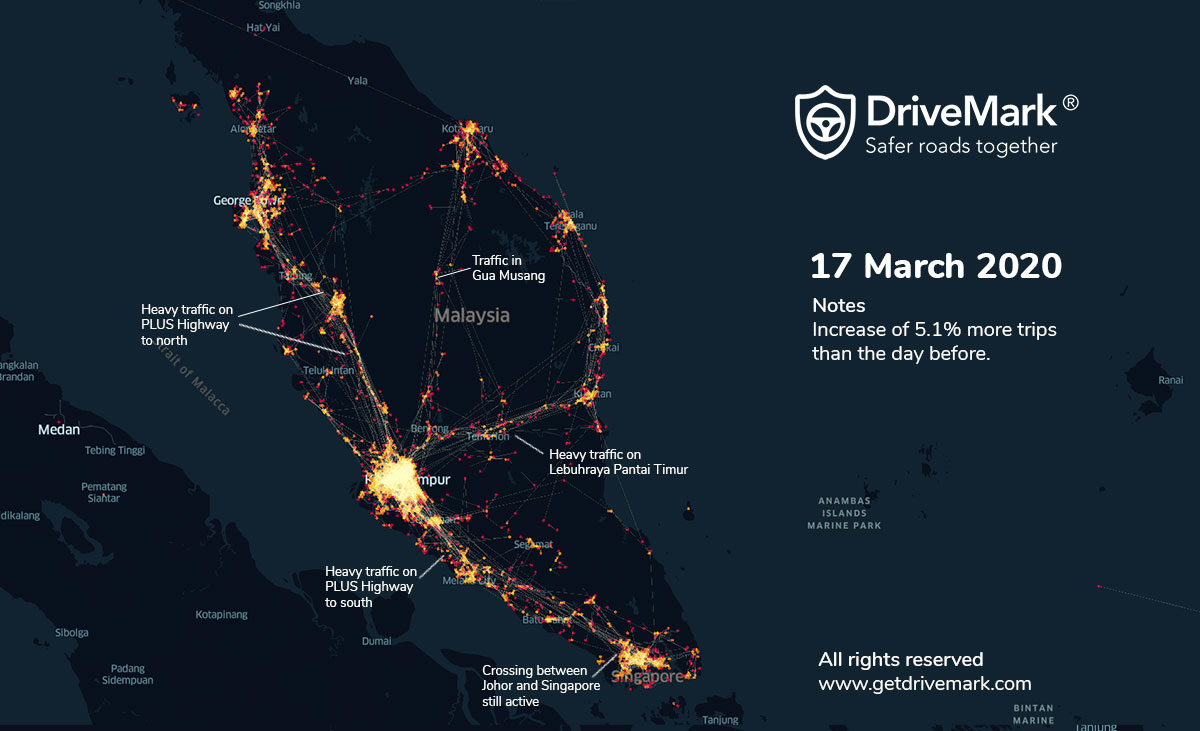
In the hours, and day after the RMO announcement, we saw a 5.1% increase in the total number of trips compared to the day before. Long stretch of traffic jams appear along the usual bottleneck areas on Plus highways (both northbound and southbound), increased traffic on Lebuhraya Pantai Timur to Kuantan, traffic in Bentong and Gua Musang, and noticeable frenzy on crossings between Johor and Singapore.
Compared to the day before (16th March 2020), we are seeing 5.1% more trips on this day, 17th March 2020. This can be attributed to lack of awareness on extent of the Restricted Movement Order directive as some Malaysians might have considered this directive as a two weeks holiday.
18th March – Restricted Movement Order is Effective
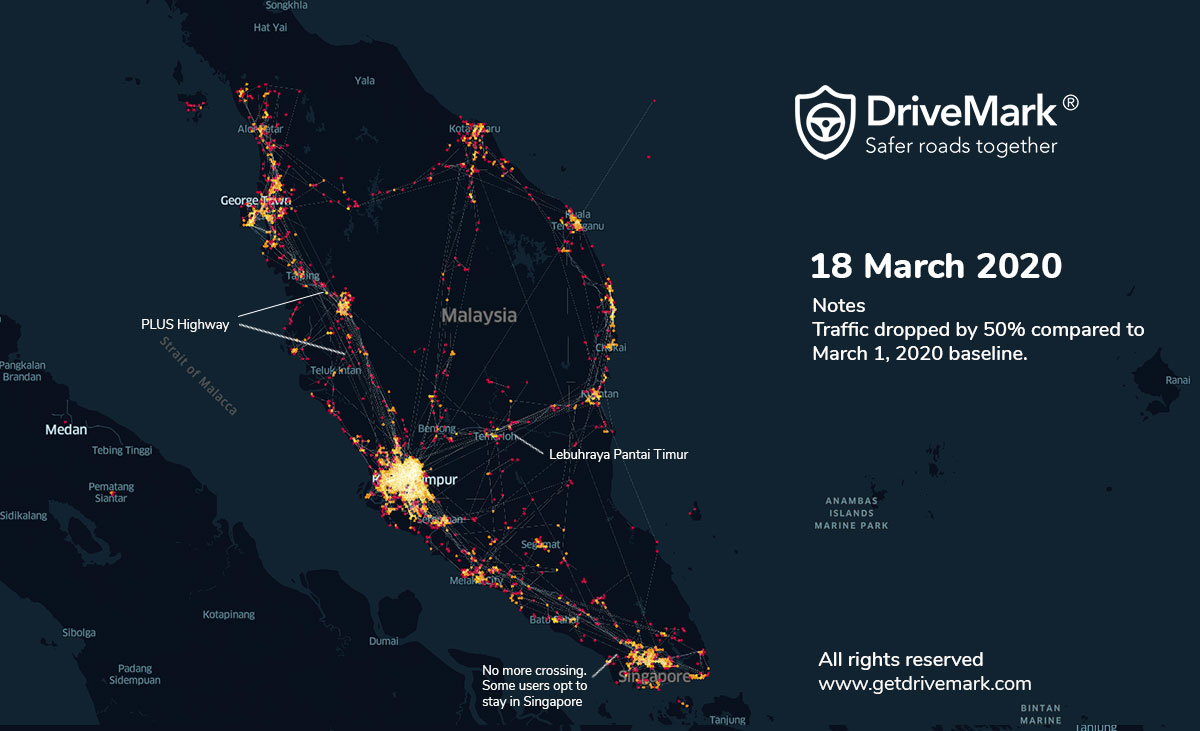
On the day RMO is set in motion, we saw a drastic 50% drop of total trips collected by DriveMark. While this sharp drop means a significant segment of Malaysian are adhering to the directive, there are still 50% trips that should be home, instead of moving on the road.
If we were to plot volume of trips for 17th March 2020 against the trips on 18th March, we would see the graph below.
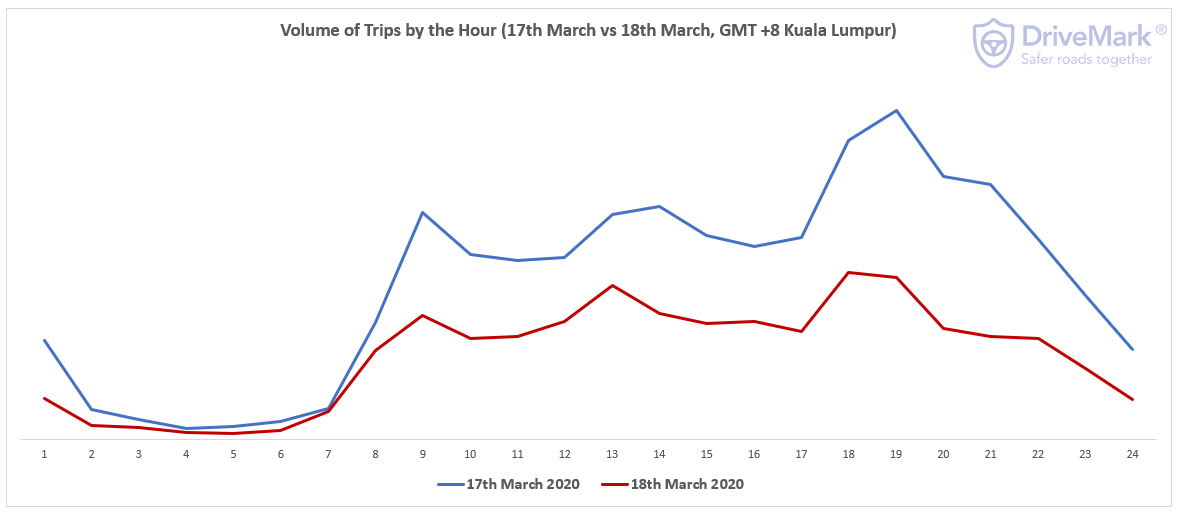
19th March – Day Two of Restricted Movement Order
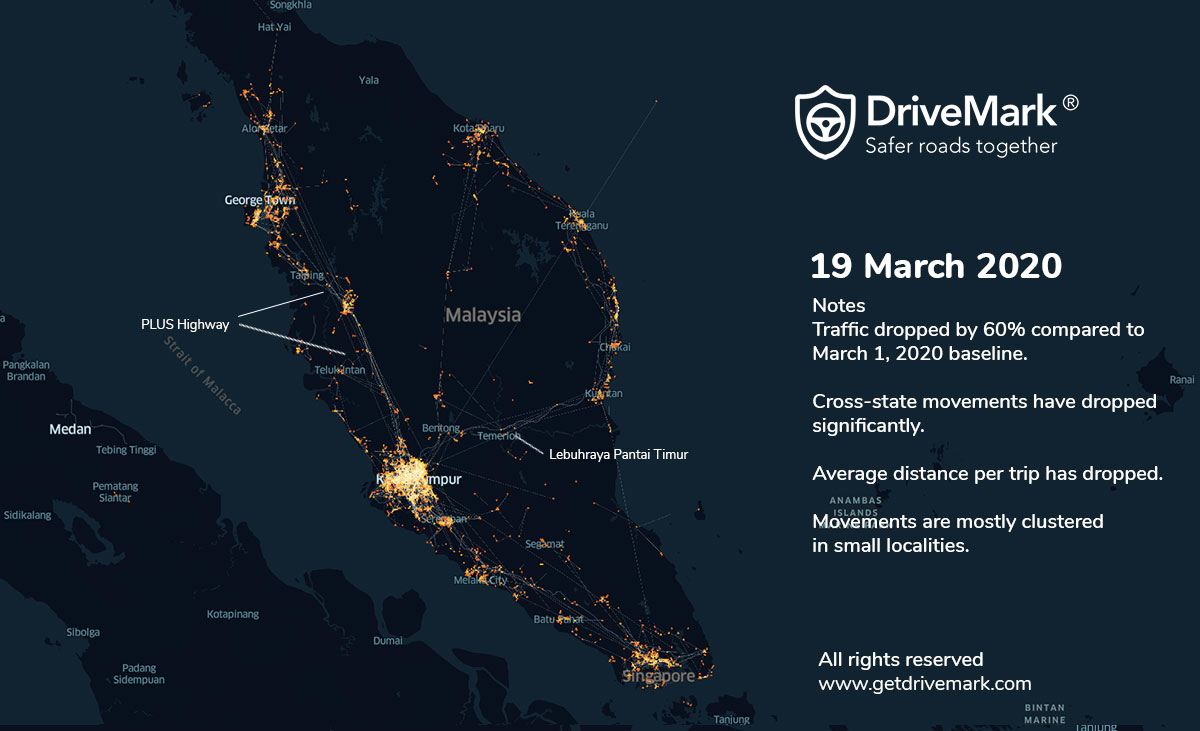
On day two, we see additional 10% drop of trips generated for the entire day. In total, volume of trips dropped by 60% since the start of RMO.
20th & 21st March – Day Three and Fourth of Restricted Movement Order
On 20th March (Day Three), volume of traffic dropped by additional 6%, ended up with 66% drop in volume compared to 1st March 2020.
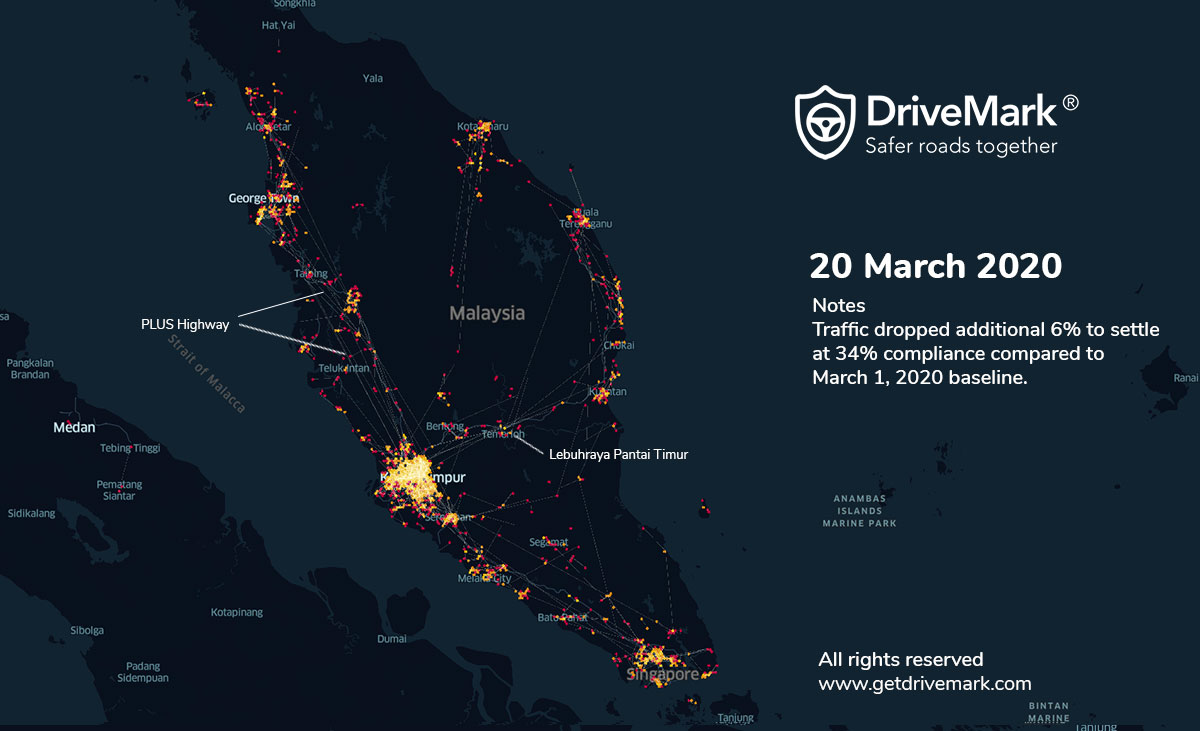
On 21st March (Day Four), trip volume also dropped 6% compared to the day before, ended up with 72% total drop since 1st March 2020.
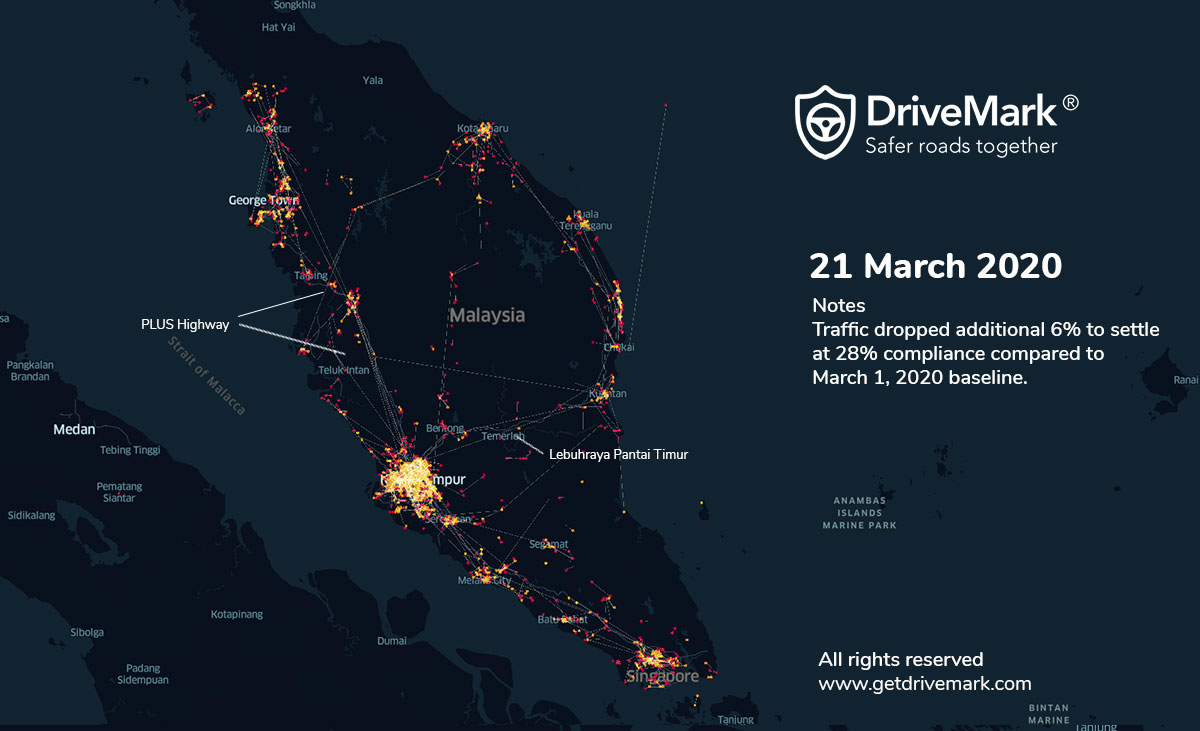
22nd March – Day Fifth of Restricted Movement Order
This day saw the highest compliance of Restricted Movement Order since we tracked trip volume.
On a normal day in DriveMark, the team would be in sorrow if we were to see drop in trip volume.
Today is quite the opposite as the data signals around 80% of us Malaysians can and do stay at home.
As shown in the visualisation below, hotspots are less brighter now due to minimal trip overlaid on top of each other, and the volume of trips is significantly lower.
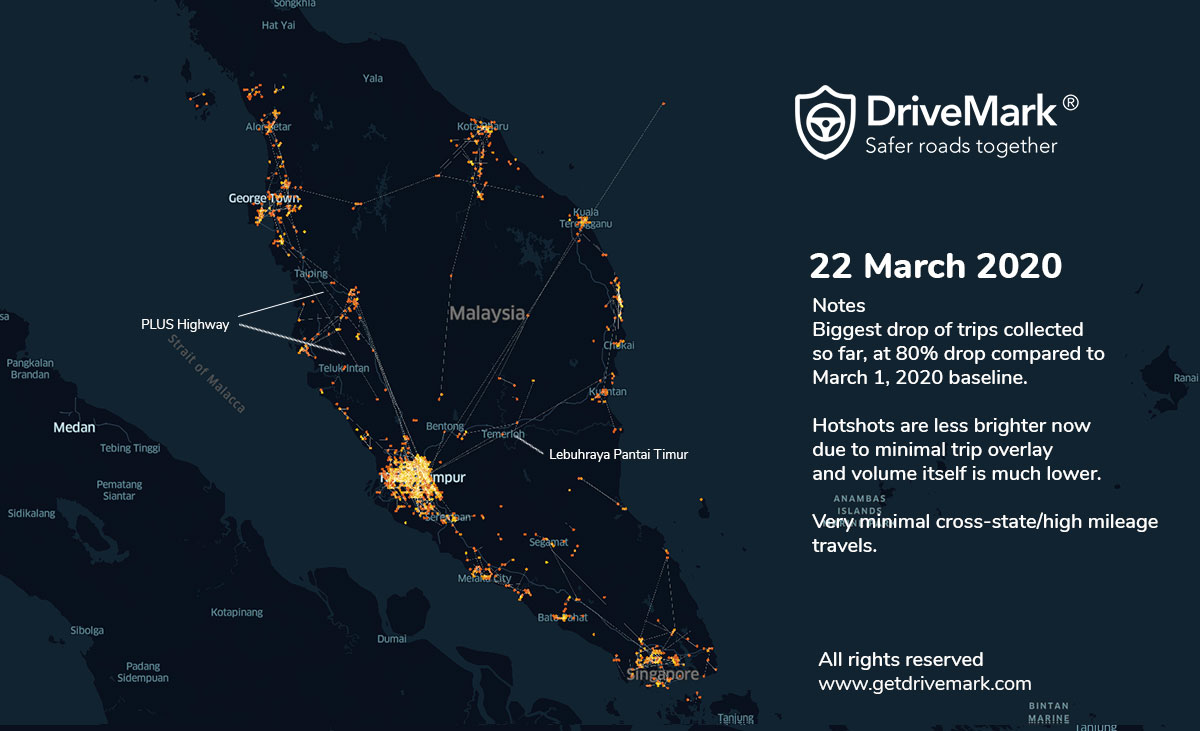
Summary of Crowd Movement Data in Malaysia
Here’s the daily summary on the volume of trips collected by DriveMark from the beginning of March to 24th day of the month.
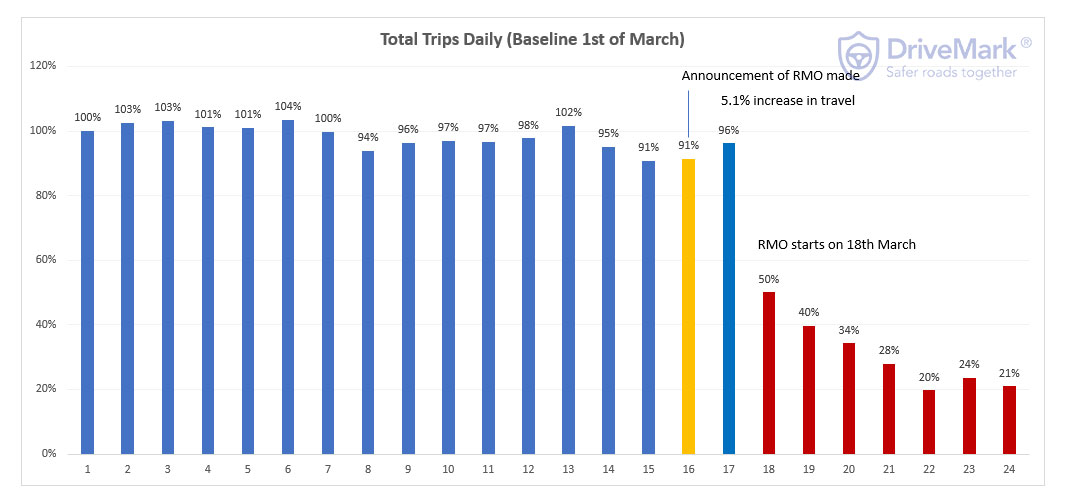
There is a slight bump of trip volume on 17th of March as Malaysians frantically on the move to shop, or worse, balik kampung (return to their hometown). This is followed by a significant drop of travel volume day by day, until it reach the bottom at 80% RMO compliance.
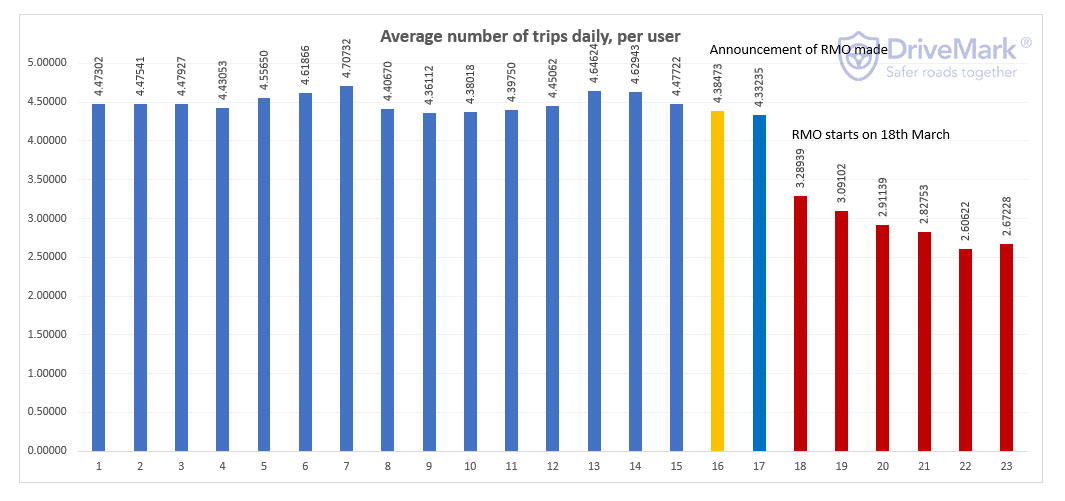
The graph above shows on average, how many trips a person does daily. In simple examples, John typically makes 4 trips a day, or Syafiq makes 5 trips a day.
Correlating with the significant drop of trip volume during RMO period, we also see each person makes lesser amount of trips every day.
Prior to RMO, a person typically drives 4.4-4.7 trips daily.
After RMO, the average number of trips dropped to 3.2, then 3.0, 2.9, 2.8, 2.6 as the days progress.
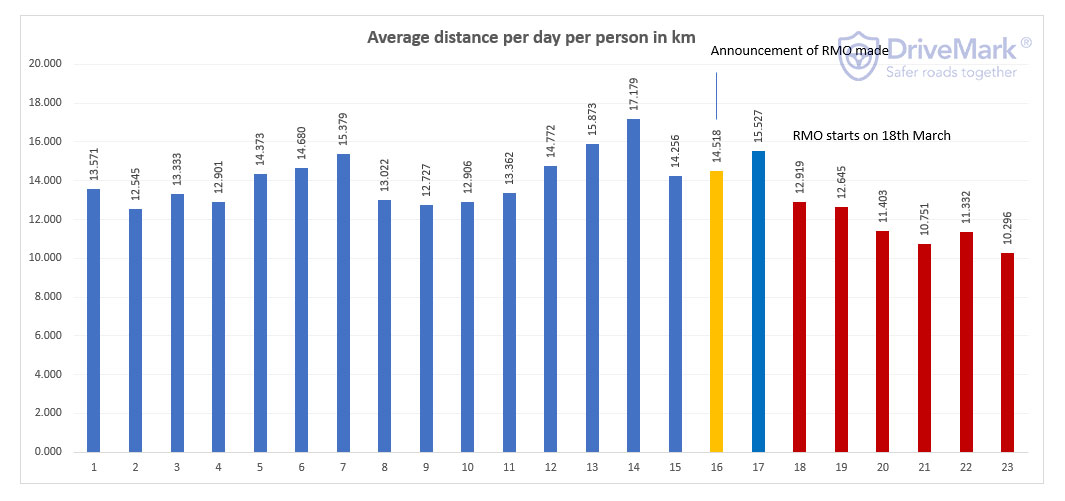
The graph above shows on average, how far (in kilometers) a person travels daily. In simple examples, John travels 12.3km every day and Syafiq travels 11.0 kilometers a day.
Right after announcement of Restricted Movement Order, we see a 1.0km increase of travel distance daily. This can be associated to a portion of DriveMark users that travel long distance on 17th March 2020.
When we average out the total distance collected on DriveMark platform versus total active users for that particular day, the average distance increased to 15.52km.
Immediate after RMO being imposed, the average distance that a person does each day starts to drop to the ever lowest 10.29km.
However.. here’s a caveat that might pique your interest.
Have a look at the next chart.
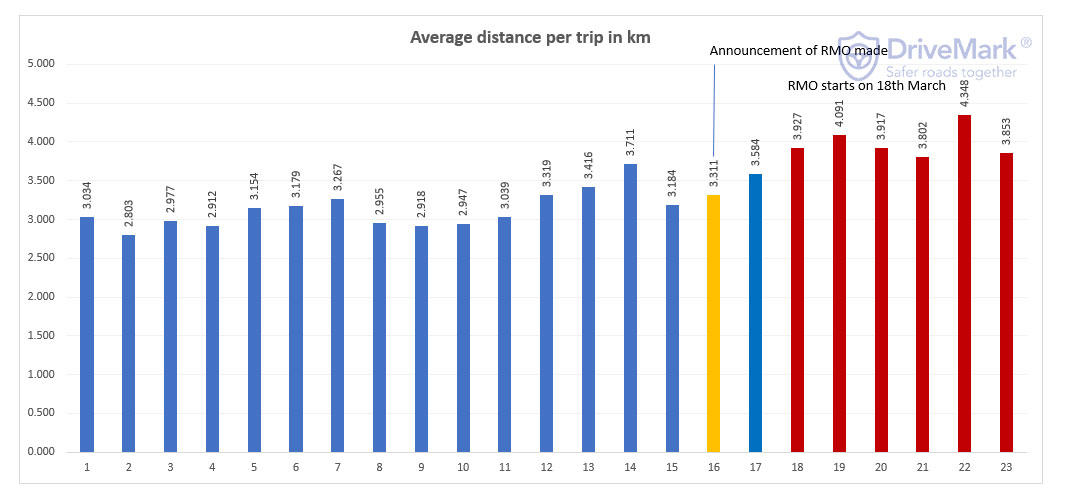
The graph above shows average distance (in km) achieved per trip. In simple example, John travels 15km a day. He has 3 trips. His average distance per trip would be 5km.
Notice the peculiar trend versus all the other graphs in this article?
Yes, you are correct. This is the only graph that show positive upward trend.
Right after RMO announcement, we can see that average distance per trip is higher than the distance prior.
Why?
We ourselves are astounded to discover this trend as we initially assume that more people would likely drive shorter distance.
We would like to think of other possibility and come up with these hypotheses(es? – plural). This graph possibly indicates:
- People no longer drive long distance to go to their usual places.
- Instead, most of us indeed stayed at home and prefer to walk/drive very, very short distance to neighborhood stores to replenish food supply. Due to battery saving features on DriveMark, we do not track short movements of less than 1km.
- Those who keep on driving, are driving because they are needed by the society.
- These users are likely persons with essential jobs such as doctors, nurses, firemen, ride-hailing drivers, dispatchers, food delivery servicemen, and others.
Arriving to these hypotheses gave us the DriveMark team a solemn reminder to appreciate our freedom to move, ability to enjoy a cup of teh tarik with friends, and to appreciate those serving at the frontline combating Covid and serving the community. ❤️
Friends, please stay home and keep Covid19 from spreading.
We are all in this together.
Note
We will continuously update this article in the coming days to reflect new data. Please do keep this page bookmarked for new info.
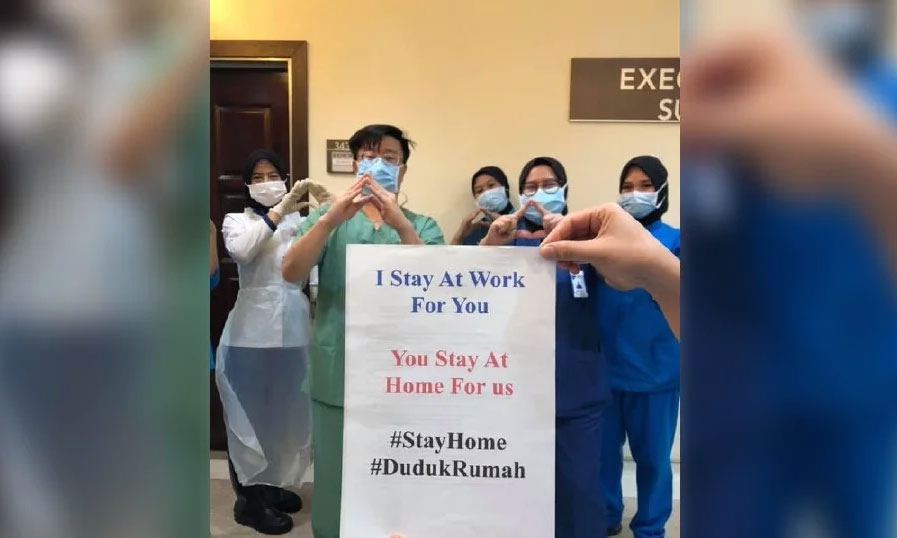
– Fuqaha. This post is dedicated to my uncle (a frontliner), his son, and my cousin’s kid who have been tested positive COVID19.
Similar Articles
Car Accident Detection and Emergency Alert using DriveMark mobile app
When DriveMark was launched back in 2017, it carried our aspiration to make the roads safer for everyone. From then on, we introduced several features to encourage drivers to be...
Senarai Harga Roadtax Perodua Myvi (List Lengkap sejak 2005-2021)
Perodua Myvi merupakan satu model yang paling laris terjual di Malaysia. Dari tahun 2006 sehingga 2013, jualan Myvi adalah paling top mengalahkan semua jenama dan model kereta yang lain. Model...
Fresh Grad & Kereta Baru, amboi, amboi…
Kalau duduk rumah sewa, tapi pakai kereta mewah, amboi, amboi.. Itulah ayat tipikal generasi milenia kita yang kurang skill ukur baju di badan sendiri. Tapi to be honest, maybe bukan...
Katsana signs MoU with Allianz, Etiqa and Axiata to develop usage-based motor insurance, DriveMark app
The motor insurance sector entered into the new era of phased liberalisation in July, with full detariffication scheduled to take place in 2019. It’s now a free market, and vehicle...
Memperkenalkan aplikasi DriveMark
KATSANA dengan bangganya mengumumkan aplikasi flagship terbaru iaitu – DriveMark. Aplikasi telematik ini adalah kemuncak hasil kerja gabungan antara telematik dan juga sistem penjejak kereta. DriveMark akan menjadi batu loncatan...
Harga Roadtax Nissan GT-R R35, R34, R33 dan R32
Nissan GT-R adalah satu model performance dari negara matahari terbit 🗾 yang sungguh lejen dan evergreen. Sports car Nissan GT-R (juga dikenali secara intim sebagai Godzilla dikalangan kaki motor se-Malaysia)...







